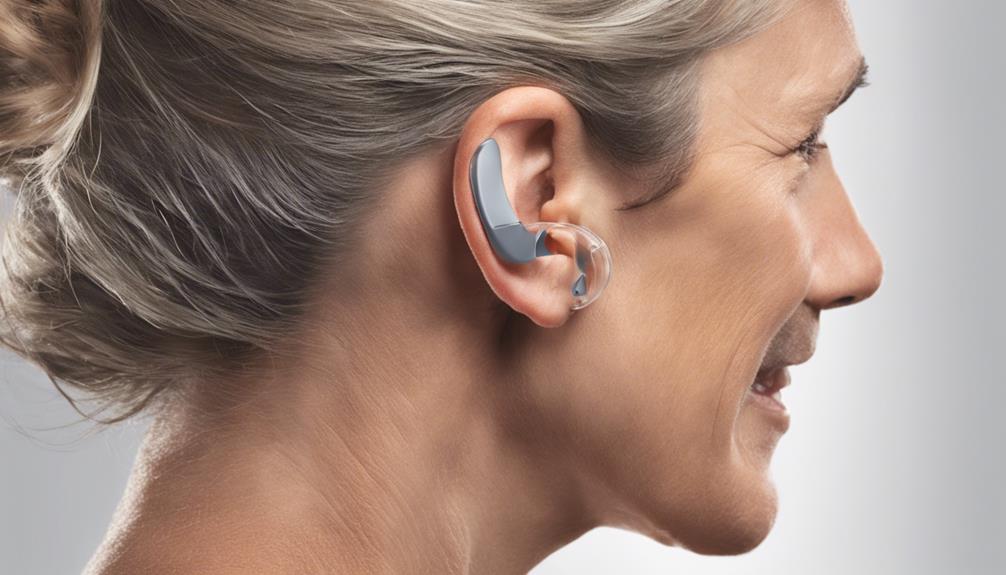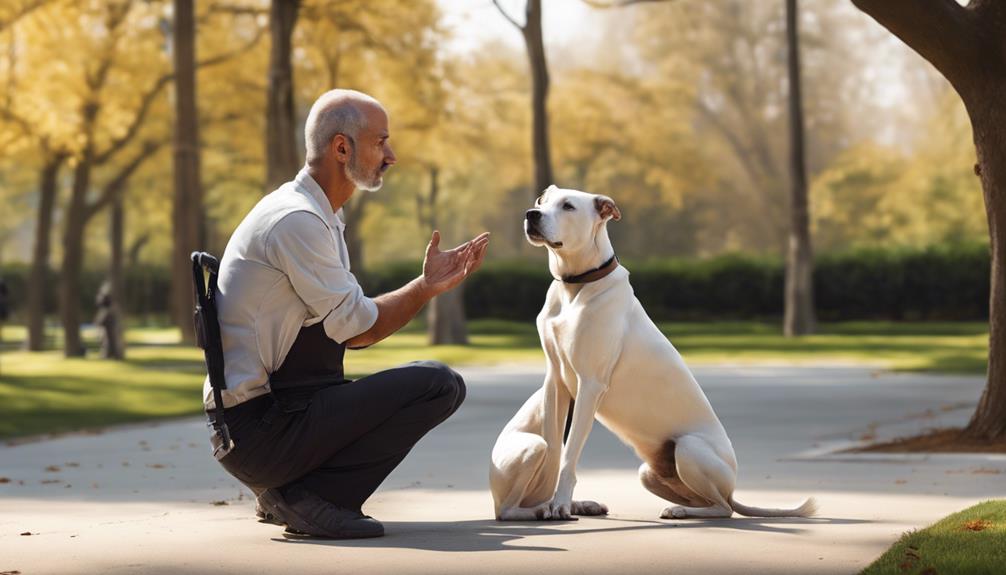As an author fascinated with the influence of advocacy, we share a compelling statistic – were you aware that merely around a third of deaf individuals in the United States possess a college degree? This information underscores the challenges encountered by the deaf community in obtaining access to higher education opportunities.
But how can a deaf lawyer change this narrative and empower individuals facing similar challenges? Join us as we explore the transformative impact a deaf lawyer can have in advocating for the rights and inclusion of the deaf and hard of hearing community.
Key Takeaways
- Providing legal representation for Deaf individuals' rights.
- Ensuring accessibility through legal frameworks.
- Advocating for sign language interpretation in legal settings.
- Empowering the Deaf community to navigate legal challenges effectively.
Understanding Deaf Community Challenges
Understanding the challenges faced by the Deaf community is essential in addressing the systemic barriers that hinder their access to resources and services. Deaf individuals encounter communication barriers in various aspects of life, from healthcare settings to social events. These obstacles not only limit their opportunities but also perpetuate discrimination due to non-inclusive laws and untrained professionals.
Legal rights of the Deaf are often overlooked, leading to a lack of necessary accommodations and support. To empower the Deaf community, we must advocate for their rights, ensuring accessibility in all environments. By recognizing the importance of effective communication strategies such as sign language interpreters and fostering inclusive spaces, we can break down the barriers that impede progress.
It's crucial to build a support network that amplifies the voices of Deaf individuals, promoting equality and opportunities for all. Together, we can work towards a more inclusive society where the Deaf community's rights are respected and upheld.
Breaking Communication Barriers

Let's champion the use of sign language interpretation, technology for accessibility, and raising awareness of legal rights to break down communication barriers.
By advocating for these crucial points, we pave the way for equal access to justice and empowerment within the deaf community.
Together, we can ensure that every voice is heard and understood, fostering inclusive environments in all facets of life.
Sign Language Interpretation
In breaking communication barriers for deaf individuals, the provision of sign language interpretation services plays a vital role in ensuring equal access and effective understanding in various critical situations. Trained sign language interpreters act as bridges between Deaf People and hearing counterparts, facilitating seamless communication. Mandated by the Americans with Disabilities Act (ADA), these interpreters are crucial in promoting inclusivity and breaking down barriers. By requesting sign language interpretation services in advance, diverse communication needs and preferences of deaf individuals can be accommodated. Access to qualified sign language interpreters is essential for fostering understanding and creating an environment of equal opportunity. Through their expertise, interpreters empower deaf individuals to fully engage in a wide range of interactions.
| Sign Language Interpreters | Bridging Communication Gaps |
|---|---|
| Equal Access | Effective Understanding |
| ADA Compliance | Inclusivity |
Technology for Accessibility
Embracing innovative technology is key to empowering deaf individuals and breaking communication barriers, ensuring inclusivity and accessibility in various aspects of life. In the realm of Deaf culture, technology plays a pivotal role in meeting communication needs.
Here are three remarkable advancements that are revolutionizing accessibility for the deaf community:
- Video Relay Services: Offering real-time sign language interpretation for phone calls, bridging the gap between deaf and hearing individuals.
- Speech-to-Text Apps: Transforming spoken words into text, facilitating seamless communication in various settings.
- Flashing Doorbells: Providing visual alerts for deaf individuals, enhancing safety and independence in their homes.
These assistive technologies aren't just tools; they're the pathways to a more inclusive and connected world.
Legal Rights Awareness
Advocating for legal rights awareness is a powerful tool in dismantling communication barriers faced by the deaf community. Understanding legal rights, such as those outlined in the ADA and Rehabilitation Act, empowers deaf individuals to demand effective communication accommodations.
Deaf lawyers specialize in ensuring that both public and private entities provide accessible communication for deaf individuals. By promoting legal rights awareness, deaf individuals can navigate discrimination and access necessary accommodations in various settings.
Deaf lawyers play a crucial role in enforcing legal obligations for effective communication, ultimately fostering inclusivity and equal access. Through heightened awareness and advocacy for legal rights, the deaf community can break down barriers and create a more inclusive and accessible society for all.
Advocating for Accessibility Rights

Passionate about ensuring equal access to communication aids, deaf lawyers tirelessly advocate for accessibility rights in critical settings such as healthcare, legal, and employment environments. Here's how we make a difference:
- Enforcing Legal Obligations: Deaf lawyers champion the enforcement of legal requirements for providing effective communication. They ensure that deaf individuals have access to vital information and services by holding entities accountable for meeting their obligations.
- Specializing in ADA Protections: Deaf discrimination attorneys specialize in safeguarding the rights of deaf individuals to reasonable accommodations under the Americans with Disabilities Act (ADA). By focusing on ADA protections, these lawyers work to dismantle barriers and ensure equal opportunities for the deaf community.
- Challenging Misconceptions: Advocacy efforts led by deaf lawyers aim to challenge misconceptions and break down barriers to accessibility faced by the deaf community. Through education, legal action, and policy advocacy, they strive to create a more inclusive society where everyone has equal access to resources and opportunities.
Combatting Discrimination Together

Let's stand together against discrimination, championing the protection of legal rights and ensuring unity against bias.
By collaborating with one another, advocating for necessary accommodations, and continuously pushing for inclusivity, we can make a profound impact in combating discrimination effectively.
Let's join forces to create a world where every individual, regardless of ability, is treated with respect and afforded equal opportunities.
Unity Against Bias
Uniting as a community against bias amplifies our voices and strengthens our resolve to combat discrimination together. Collaboration with deaf individuals and organizations empowers us to challenge discrimination effectively.
By standing united, we create a powerful force for change that promotes inclusivity and equal opportunities for all. Together, we can break down barriers in education, employment, healthcare, and public services. Our collective efforts not only advocate for fair treatment but also strive to eliminate systemic biases.
Let's harness the strength of our unity to create a more inclusive society where every voice is heard and every individual is valued. Join us in this movement towards a future free from discrimination.
Legal Rights Protection
Protecting legal rights for the deaf community involves advocating for equal access and combatting discrimination through various legal avenues such as the ADA, Rehabilitation Act, and IDEA. Ensuring effective communication, access to sign language interpreters, and captioning are essential in addressing discrimination in education, employment, healthcare, and public accommodations. By providing legal representation in civil rights cases, we strive to secure fair treatment and uphold the rights of the deaf community. Collaborating with deaf individuals, we fight for inclusivity, accessibility, and equality in all aspects of life. Together, we can challenge discrimination, promote understanding, and create a more just society where legal rights are respected and protected.
| Legal Rights Protection | Combatting Discrimination Together |
|---|---|
| Equal Access | Advocating for inclusivity |
| Sign Language Interpreters | Fighting discrimination together |
| Effective Communication | Ensuring accessibility |
| ADA, Rehabilitation Act, IDEA | Upholding legal rights |
Navigating Legal Systems Effectively
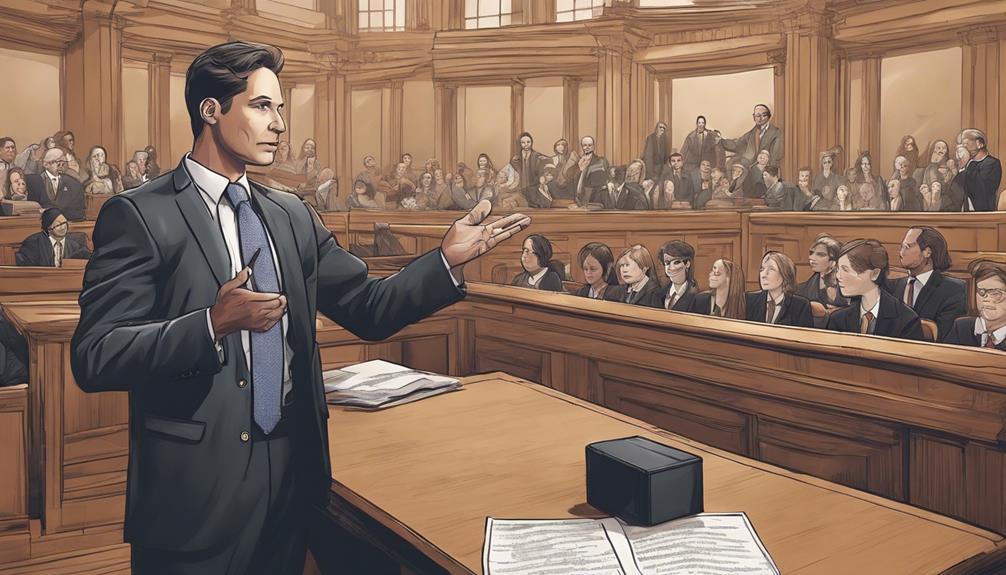
Navigating legal systems effectively is a crucial skill that empowers deaf and hard of hearing individuals to advocate for their civil rights with confidence and determination. Deaf lawyers specializing in legal representation for the deaf community play a vital role in ensuring justice and equality. Here are three key strategies they utilize to navigate legal complexities effectively:
- Specialized Expertise: Deaf lawyers bring a deep understanding of the unique challenges faced by the deaf and hard of hearing community, allowing them to provide tailored legal representation focused on civil rights issues.
- Collaborative Approach: By working closely with private attorneys on a case-by-case basis, deaf lawyers ensure that all aspects of the legal process are accessible and inclusive, leading to more effective representation for their clients.
- Establishing Legal Precedents: Through impact cases, deaf lawyers actively contribute to the establishment of legal principles that promote equality and equal access for the deaf community, paving the way for future advocacy efforts.
Empowering Deaf Voices
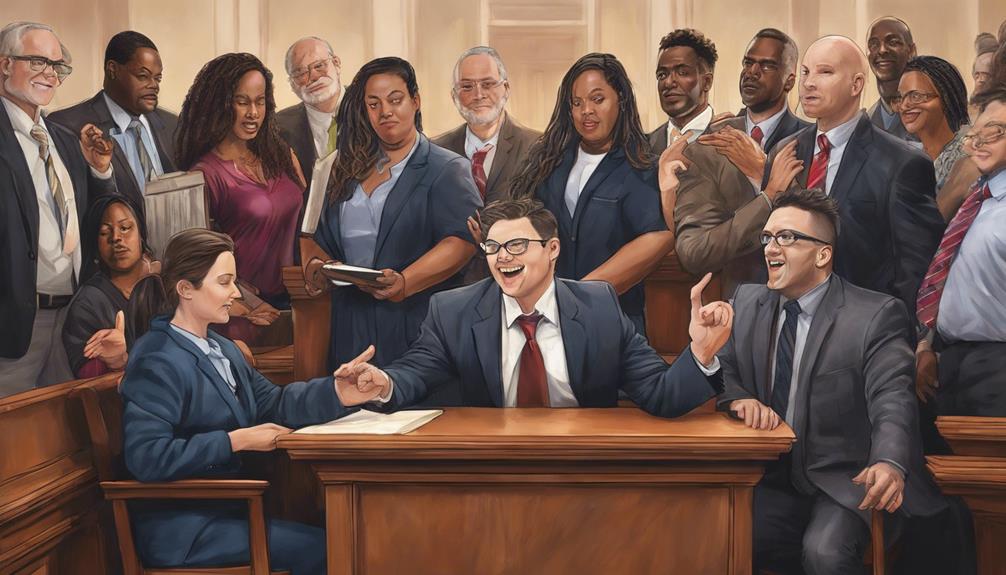
We believe in the power of amplifying deaf voices to create positive change.
Deaf lawyers serve as champions for the community, ensuring representation and accessibility in legal matters.
Deaf Community Representation
Empowering deaf voices through legal advocacy is a powerful tool in dismantling barriers and advancing the rights of the deaf community.
- Unity in Diversity: Deaf community representation fosters a sense of unity among diverse deaf individuals, highlighting their unique experiences and needs.
- Breaking Down Walls: Legal representation empowers deaf individuals to break down communication barriers and stand up against discrimination, ensuring their voices are heard and respected.
- Leading the Way: Deaf lawyers serve as trailblazers, paving the path for a more inclusive legal system that recognizes and upholds the rights and dignity of the deaf community.
Accessibility in Law
Advocating for accessibility in law is our mission, ensuring deaf voices are heard and respected in legal settings. Deaf lawyers champion legal assistance by advocating for communication strategies tailored to the Deaf or hard-of-hearing community. From sign language interpreters to visual aids, we strive to break down barriers to legal representation. Ensuring legal documents are provided in accessible formats like captions and transcripts is crucial for equal access to legal information. Online resources and video communication play a vital role in promoting understanding in legal settings for the deaf community. By focusing on enhancing accessibility, we empower deaf individuals to navigate legal matters with confidence and equality.
| Legal Assistance | Communication Strategies | Deaf or Hard-of-Hearing |
|---|---|---|
| Sign Language Interpreters | Visual Aids | Accessible Formats (captions, transcripts) |
| Online Resources | Video Communication | Equal Access to Legal Information |
Overcoming Communication Barriers
Breaking down communication barriers is crucial for empowering the voices of the deaf community in legal settings. Deaf lawyers, with their firsthand understanding of these challenges, spearhead advocacy efforts to ensure inclusivity and accessibility. Through their passionate advocacy, they pave the way for a more equitable legal system.
- Advocating for Accessible Environments: Deaf lawyers push for sign language interpreters, CART services, and other accommodations to facilitate effective communication.
- Challenging Misconceptions: By challenging stereotypes and promoting understanding, deaf lawyers work towards a more inclusive environment for the deaf community.
- Empowering Deaf Individuals: Deaf lawyers empower individuals by ensuring their voices are heard and respected in legal proceedings.
Challenging Misconceptions and Stereotypes
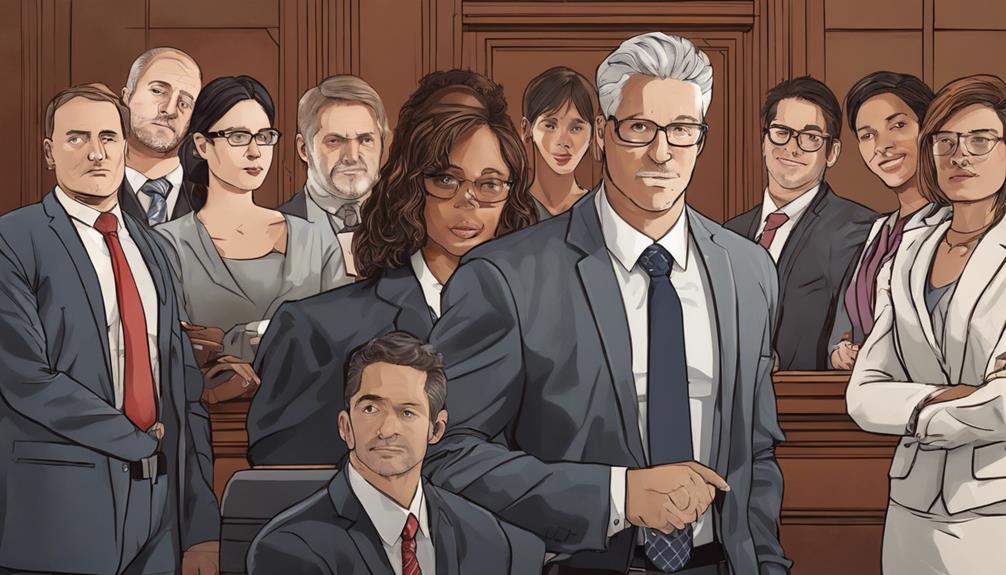
Challenging misconceptions and stereotypes, deaf lawyers eloquently demonstrate their legal prowess and advocate fiercely for equal rights. Through their dedication to legal practice and effective advocacy, they shatter stereotypes surrounding deaf individuals' capabilities.
By showcasing their competence in the legal field, deaf attorneys not only represent their clients with skill but also serve as powerful examples of overcoming communication barriers. Their relentless pursuit of justice and equal access highlights the importance of diversity in the legal profession.
Deaf lawyers play a vital role in educating others about the true potential of deaf individuals in legal advocacy, debunking myths and paving the way for a more inclusive society. By actively engaging in legal representation, they challenge assumptions about limitations in the legal system based on disability.
Their contributions not only empower the deaf community but also enrich the legal landscape with unique perspectives and insights.
Amplifying Deaf Rights

Amplifying the rights of the deaf community is a crucial mission for deaf lawyers dedicated to ensuring equal access and accommodations in the legal landscape. We strive to make a difference by advocating for the legal rights of deaf individuals, paving the way for a more inclusive society.
- Leading Impact Cases: Deaf lawyers take on landmark cases to establish legal precedents that promote equality and access for the deaf community.
- Collaborating for Change: Working hand in hand with private attorneys, we represent deaf or hard of hearing clients in discrimination cases, amplifying their voices in the legal system.
- Empowering Through Representation: Deaf lawyers extend legal support to all, regardless of income or status, ensuring that the deaf community isn't deprived of justice. Together, we secure settlements that cover legal fees, empowering deaf individuals to stand up for their rights.
Fostering Self-Empowerment

Advocating for deaf rights extends beyond legal battles; it involves fostering self-empowerment through education, support networks, and effective communication strategies. Understanding legal rights is crucial in navigating systems that often overlook the needs of the deaf community.
By building a strong support network with Deaf organizations and individuals, we can amplify our self-advocacy efforts, standing together to demand equal access and opportunities. Effective communication strategies, such as utilizing sign language interpreters and embracing assistive technologies, play a vital role in empowering deaf individuals to express themselves confidently and be fully understood.
Accessing resources, staying informed, and actively engaging in advocacy groups are essential components of self-empowerment for the deaf community. Developing self-advocacy skills early on not only promotes confidence and independence but also ensures effective communication in various settings.
Let's continue to champion for our rights, equip ourselves with knowledge, and unite in empowering one another towards a more inclusive and accessible future.
Leveraging Assistive Technologies
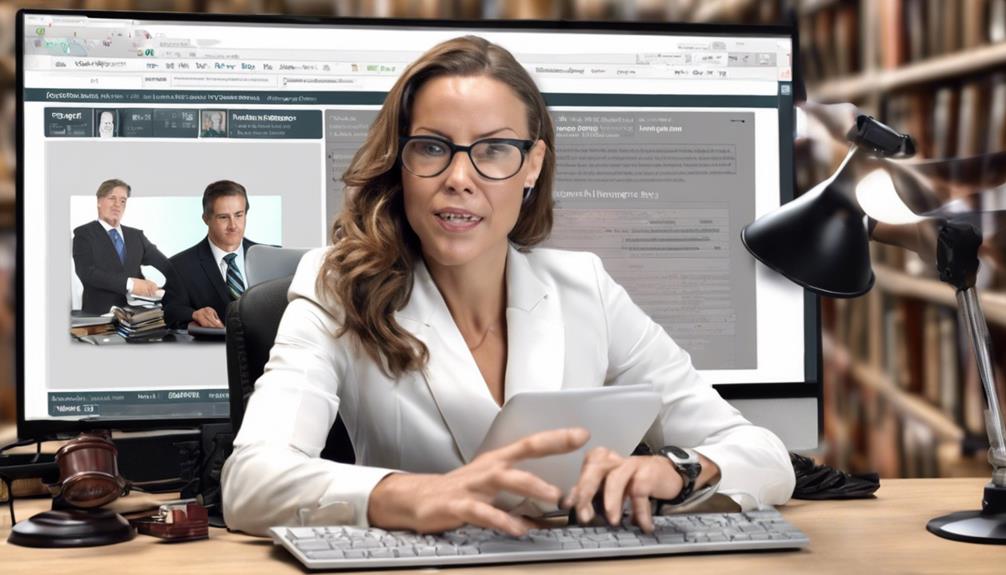
By embracing cutting-edge assistive technologies like Ava, we empower deaf individuals to access real-time captions, enhancing communication autonomy and understanding in various interactions. These advancements in communication aids revolutionize the way deaf individuals engage with the world, fostering inclusivity and breaking down communication barriers.
Here are three compelling reasons why leveraging assistive technologies is paramount for enhancing communication effectiveness for deaf individuals:
- Real-Time Accuracy: Assistive technologies like Ava provide accurate real-time captions, ensuring that deaf individuals don't miss out on any crucial information during conversations or events.
- Increased Autonomy: Accessing real-time captioning through assistive technology grants deaf individuals more independence in navigating various communication situations, empowering them to express themselves more freely.
- Enhanced Understanding: Utilizing communication aids like Ava significantly improves understanding in interactions, leading to more meaningful and effective communication exchanges that foster connections and mutual comprehension.
Embracing these innovative tools isn't just about leveraging technology; it's about empowering deaf individuals to communicate effectively and advocate for themselves in a world that's constantly evolving.
Establishing Support Networks

Establishing strong support networks within the deaf community is pivotal for fostering empowerment and access to essential resources. Deaf lawyers, like myself, play a vital role in these networks by providing advocacy, legal representation, and invaluable support.
Organizations such as the National Association of the Deaf (NAD) offer guidance on legal rights, discrimination issues, and effective communication strategies, enhancing our community's ability to navigate challenges and access necessary resources.
Enhancing Deaf Advocacy Skills

We understand the importance of honing our advocacy skills as deaf individuals.
By mastering effective communication strategies, being aware of our legal rights, and building strong support networks, we empower ourselves to create meaningful change.
Together, we can amplify our voices and champion for a more inclusive and accessible world for the deaf community.
Communication Strategies for Advocacy
Utilizing sign language interpreters, CART services, and assistive technologies enhances the effectiveness of communication in advocating for deaf rights and needs. When we harness these tools, we create a powerful platform for our voices to be heard loud and clear.
Picture this:
1) A sign language interpreter gracefully conveying our message in a legal setting, ensuring every nuance is understood.
2) CART services transforming spoken words into real-time text, bridging any communication gaps seamlessly.
3) Assistive technologies amplifying our reach, enabling us to connect with a broader audience and advocate for change on a larger scale.
Legal Rights Awareness
Enhancing our advocacy skills as deaf individuals begins with a deep understanding of our legal rights under the ADA and Rehabilitation Act. Knowing the laws that protect us is crucial for effective advocacy.
By being aware of our legal rights, we can confidently navigate various situations and demand the accommodations we deserve. This knowledge empowers us to challenge discrimination and ensure equal access in education, employment, and public services.
Legal rights awareness equips deaf individuals with the tools to advocate for ourselves and our community. With this understanding, we can stand up for our rights, seek necessary support, and strive for a more inclusive society where deaf individuals are valued and respected.
Building Strong Networks
Establishing connections with deaf organizations and individuals is paramount for honing our advocacy skills and fostering a supportive community network. By engaging with these networks, we open doors to endless possibilities for growth and empowerment. Here's how building strong networks can amplify our impact:
- Access to Mentorship: Connecting with experienced advocates within deaf organizations can provide invaluable guidance and wisdom, helping us navigate complex advocacy issues with confidence.
- Collaborative Opportunities: Networking enables us to collaborate with like-minded individuals and organizations, pooling resources and expertise to drive impactful advocacy initiatives forward.
- Collective Empowerment: Through strong networks, we can harness the collective strength of the deaf community, amplifying our voices and advocating for meaningful change together.
Let's unite, learn, and empower one another towards a brighter, more inclusive future.
Promoting Deaf Community Engagement

Promoting Deaf Community Engagement involves actively advocating for equal access and accommodations to ensure the full participation and empowerment of deaf individuals in society. Deaf lawyers play a crucial role in this advocacy, using their legal expertise to push for legislative changes that protect the rights of the deaf community. By collaborating with various organizations, they address systemic challenges faced by deaf individuals, working towards a more inclusive society.
These lawyers not only focus on securing necessary accommodations but also strive to raise awareness about deaf-related issues. Their efforts go beyond legal matters; they aim to empower deaf individuals to engage fully in their communities. Through their work, deaf lawyers foster a sense of inclusivity and belonging, promoting a society where everyone, regardless of their hearing abilities, can participate and thrive. By championing community engagement, these legal advocates pave the way for a more equitable and accessible future for the deaf community.
Leading Change in Legal Advocacy

Deaf lawyers actively champion legal change by advocating for the rights and equality of the deaf community through representation in discrimination cases and the establishment of crucial legal precedents. Here's how we lead change in legal advocacy:
- Pioneering Legal Strategies: Deaf lawyers are at the forefront of developing innovative legal strategies to address discrimination against the deaf community. By pushing boundaries and challenging existing norms, we pave the way for groundbreaking legal victories.
- Collaborating for Impact: Deaf lawyers work hand in hand with private attorneys, pooling expertise and resources to take on impact cases that have far-reaching implications for the rights of deaf individuals. Through collaboration, we amplify our advocacy efforts and drive meaningful change.
- Empowering Legal Representation: Deaf lawyers not only advocate for the deaf community but also provide crucial consultation to other legal professionals representing deaf or hard of hearing clients. By sharing insights and best practices, we ensure effective legal representation and empower others to champion the cause of equal rights and access.
Frequently Asked Questions
How Do I Advocate for Deaf People?
Advocating for deaf individuals involves understanding legal rights, clear communication, and building strong networks.
We ensure needed accommodations like sign language interpreters and stay informed on Deaf-related news and legislation.
Specific requests for CART services or captions are crucial for effective communication access.
By being proactive, empathetic, and informed, we empower deaf advocacy efforts and create a more inclusive society.
Let's work together to amplify the voices of the Deaf community and drive positive change.
How Do I Advocate for Myself for Hearing Loss?
Advocating for ourselves with hearing loss is crucial. We must clearly express our needs for accommodations, such as interpreters or captioning, to ensure effective communication.
Building a strong support network with Deaf organizations can amplify our advocacy efforts. Staying informed on Deaf-related news and resources is vital for enhancing our self-advocacy skills.
Documenting challenges, escalating requests, and seeking legal help when needed are essential steps to ensure our rights are met.
What Are the Goals of Self-Advocacy for Deaf and Hard of Hearing?
Our goals in self-advocacy for the deaf and hard of hearing are to raise awareness of legal rights, secure necessary accommodations, and foster confidence in navigating diverse environments.
By educating ourselves on laws like the ADA and forging connections with supportive networks, we aim to promote inclusivity and equal opportunities.
Through these efforts, we strive to enhance self-awareness, communication skills, and overall well-being, empowering ourselves and others in our community.
What Is an Example of Self-Advocacy?
Sure!
An example of self-advocacy is when we, as a deaf community, stand up for our rights by requesting accommodations like sign language interpreters or captioning. By educating others about our needs and legal rights, we empower ourselves to navigate challenges and access resources.
Through effective self-advocacy, we promote inclusivity and ensure our full participation in various aspects of life. It's about being proactive, assertive, and making our voices heard.
Conclusion
In conclusion, as deaf lawyers, we have the power to empower our community to overcome challenges and fight for their rights.
For example, by advocating for better access to sign language interpreters in courtrooms, we can ensure fair representation for deaf individuals.
Let's continue to lead the way in promoting inclusivity, breaking down barriers, and creating a more just society for all.
Together, we can make a difference.


